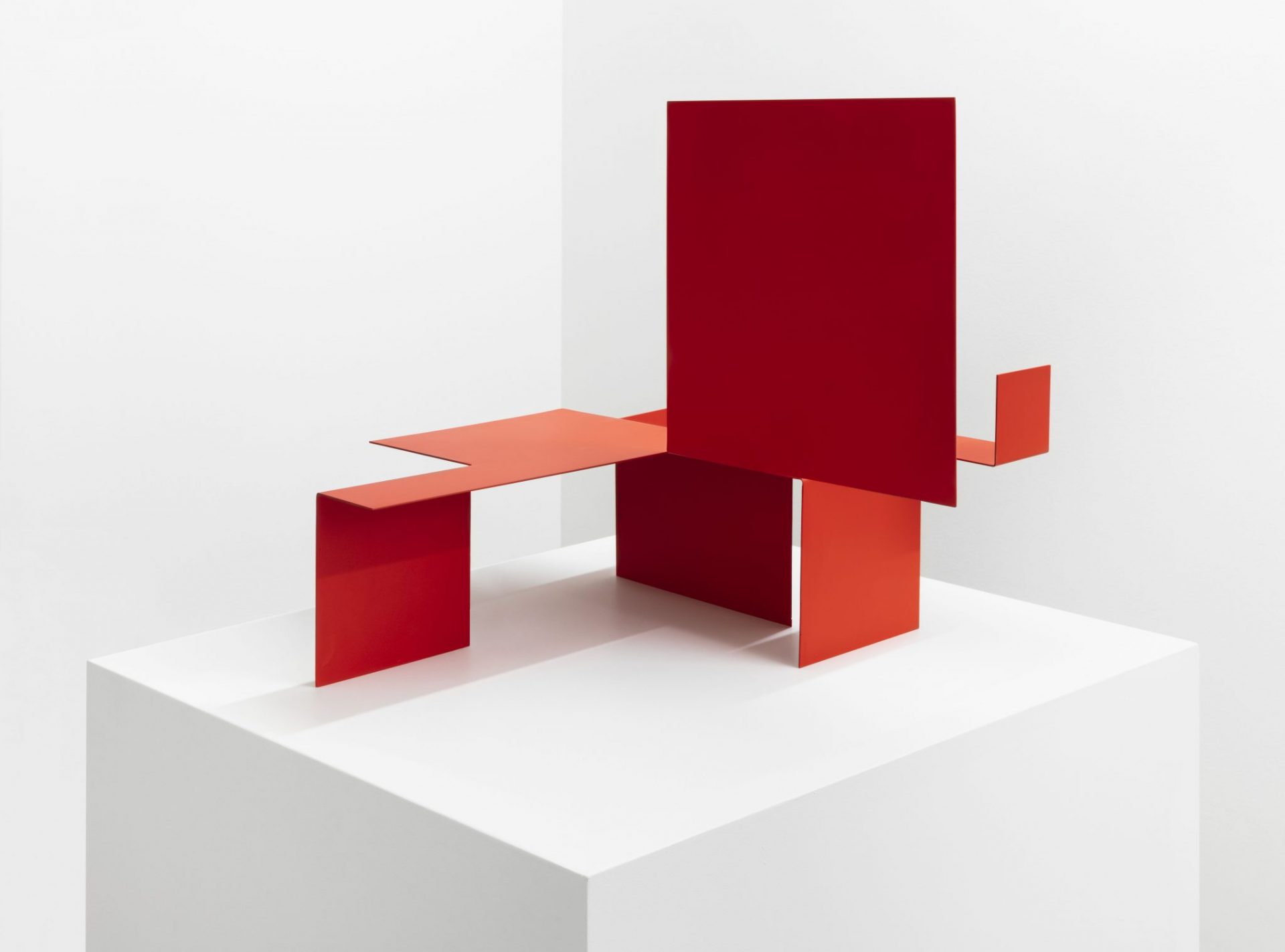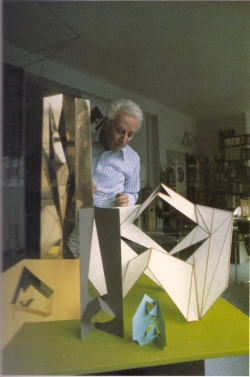Munari in 1951 while working at the cycle of negative-positive makes this sculpture whose design is so simple to be disarming.
A square sheet of metal is cut and folded to create a volume-sculpture which filled the gaps and create forms of negative-positive. The novelty is the play of solids and voids, in the simplicity of the design that uses a square module and also the fact that the cuts are introduced.
Anyone with a piece of colored cardboard and a pair of scissors can make a sculpture so simple and yet so complex, whose formal beauty, after more than half a century, it is not to be archived.

The first travel sculptures are born in the early fifties as folding sculptures and in fact are given away or sent as greeting cards, and thereafter , since 1958, are called travel sculptures.
The sculpture was created with travel all the characteristics of the modern era: is low-cost, is practical, is also wanting to single-use is to serve the modern nomad who lives more lives houses or sometimes just the rooms but several latidudini is democratic by design, is light, when is exposed does not need large spaces and can also express a cultural dimension to private.


The sculpture comes folded in an envelope. You open the envelope and removing the sculpture. Place the sculpture on a horizontal surface (the inclined planes slip) before turning off the light and see how this illuminates different parts protruding or falling, the parties full and empty. Turn them over on the other hand, changes its appearance, your thoughts will become practical to aesthetic slowly (speed depends on you), you'll wonder no more "is the Cusa chel rob ki" and fall asleep happy. Good night.
[Bruno Munari, course code, Einaudi]
Munari in '90 makes a lot of sculptures based on the shapes of folded cardboard sculpture travel. Some of these sculptures in Corten steel (which changes with time and weather) were exhibited on the seafront of Naples and Cesenatico. Others have found a resting place, as in Portofino, Riva del Garda, Canterbury.
source: munart.org

0 comments:
Post a Comment